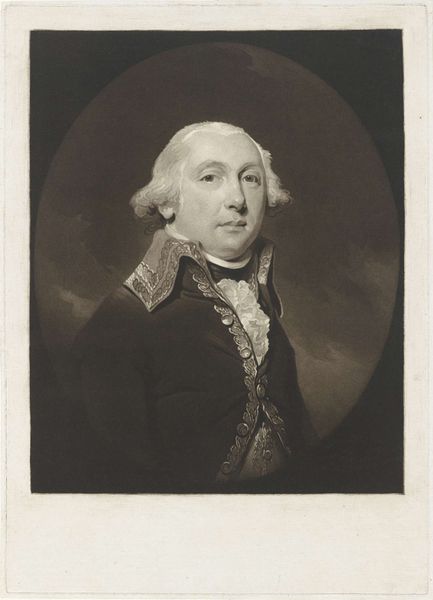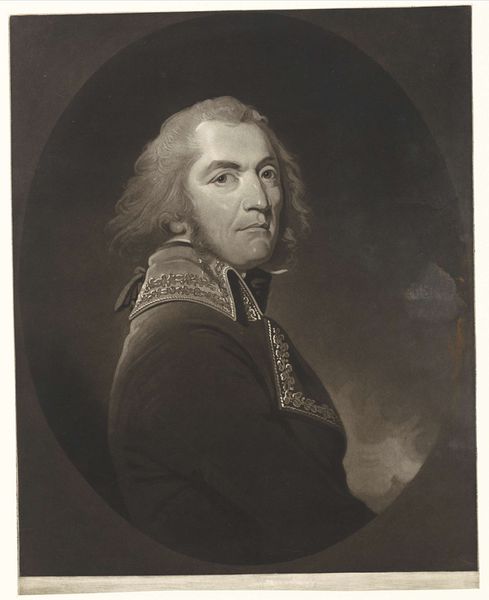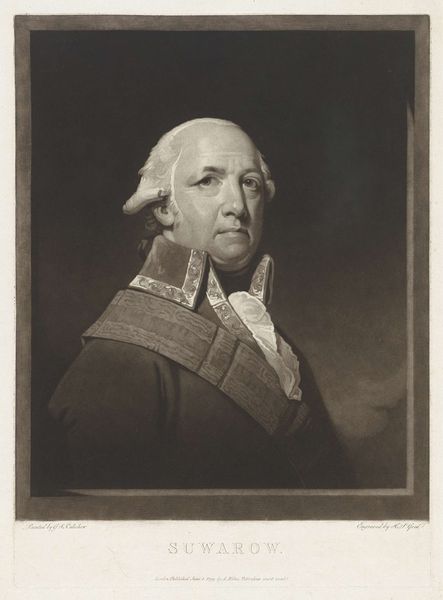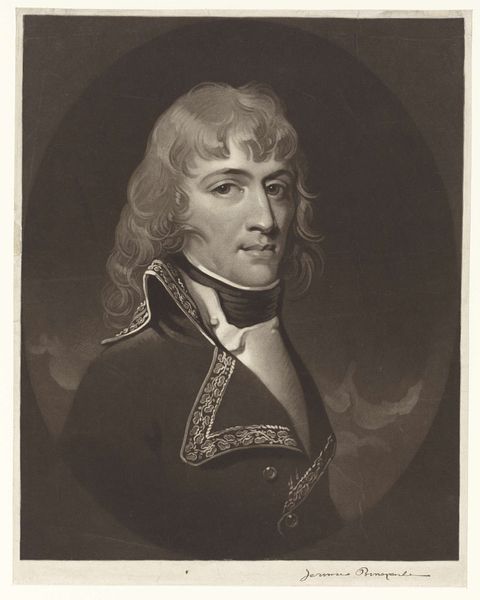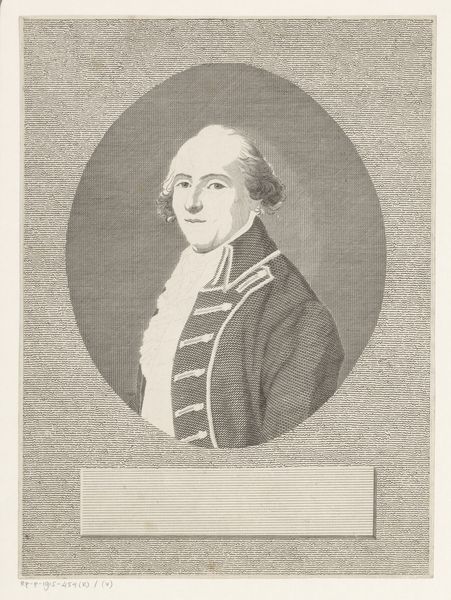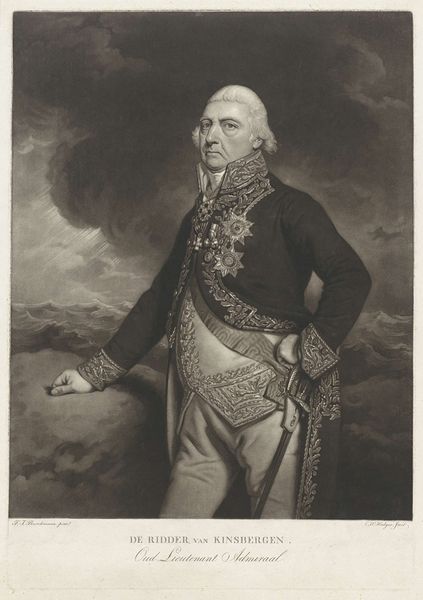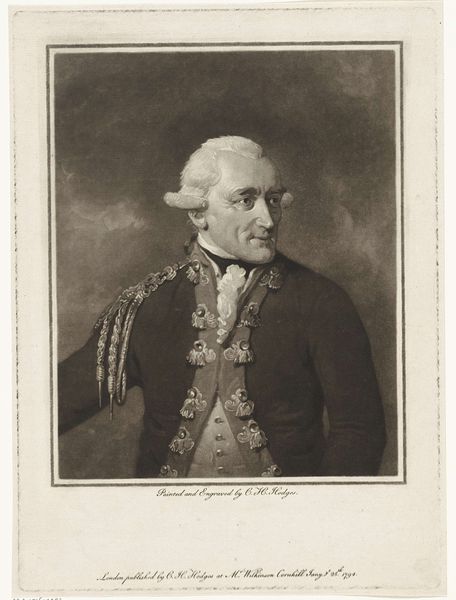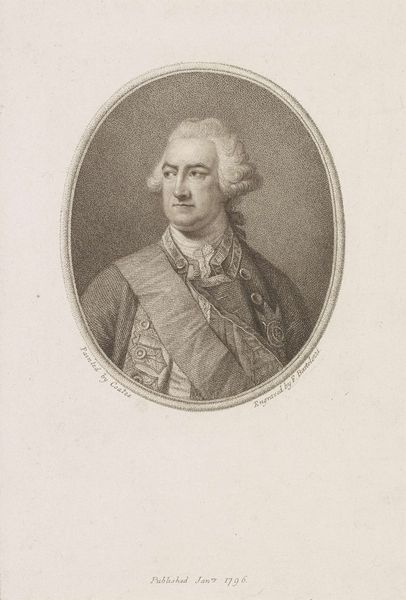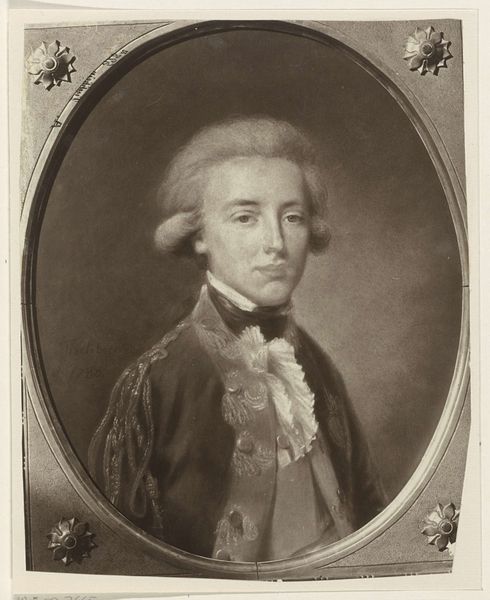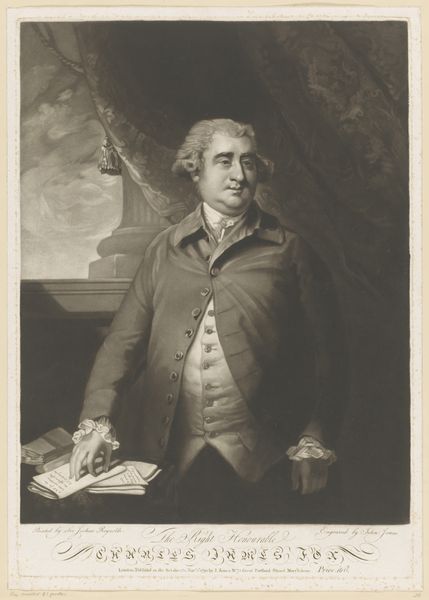
print, engraving
#
portrait
#
neoclacissism
# print
#
caricature
#
historical photography
#
history-painting
#
engraving
#
portrait art
Dimensions: height 384 mm, width 290 mm
Copyright: Rijks Museum: Open Domain
Curator: This is Charles Howard Hodges' "Portret van Herman Willem Daendels," created around 1795. The Rijksmuseum houses this fascinating engraving. Editor: My immediate reaction? Cold. It’s formally precise, but the stark contrast and the subject's guarded expression create a palpable distance. Curator: Indeed. The portrait reflects the Neoclassical style, a movement rooted in the ideals of order and reason, moving away from the flamboyance of the Rococo period. Notice how Daendels is framed in an oval—a deliberate echo of ancient Roman portraiture. Editor: Absolutely, but the very process of engraving speaks to a different kind of order—a highly reproducible, almost industrial way of making an image. This wasn’t about the unique touch of the artist, but about distributing and circulating a specific image. Curator: And the symbols within are incredibly telling. The attire signifies authority and military might, aligning with Daendels' role during that turbulent period in Dutch history. His unwavering gaze reinforces that image of power. But there’s a hint of something else in his eyes, a shadow of complexity perhaps? Editor: Power that's been meticulously crafted and disseminated. The artist didn't just spontaneously create this portrait; the creation itself has implications about wealth, labor and accessibility to the broader public through printed media. The level of detail is only possible by the mastery of labor-intensive craft. Curator: It also reflects how political figures used visual rhetoric. A print like this solidifies not only Daendels as an individual, but also reinforces his place in the emerging political landscape. Editor: I hadn't thought of the politics involved in print distribution that's a completely other fascinating angle here! Considering that alongside the materiality brings out new questions on the cost of propaganda. Curator: These visual threads help us understand a larger historical picture. Daendels was a polarizing figure. Looking at him here offers a peek into a pivotal era. Editor: Precisely! By considering printmaking technology of the time, alongside the art and symbolisms that exist inside the work itself, helps us have a far better appreciation of how historical narrative gets cemented, spread and consumed by its audience.
Comments
No comments
Be the first to comment and join the conversation on the ultimate creative platform.

